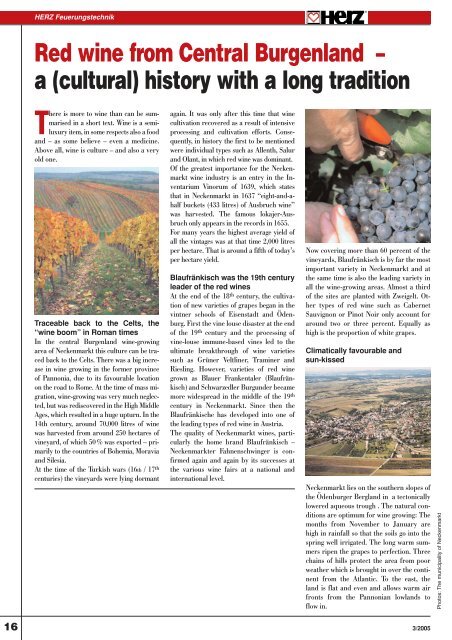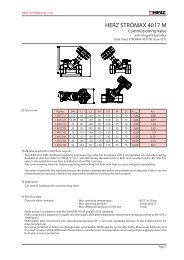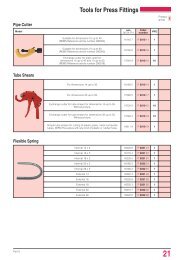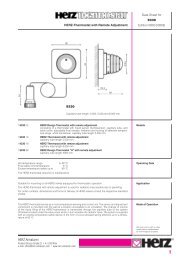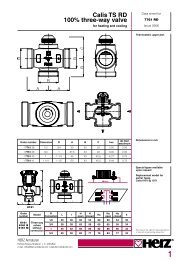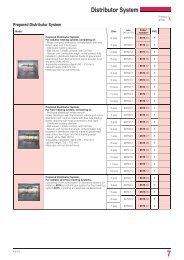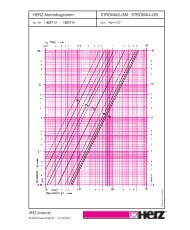Herz Valves UK
Herz Valves UK
Herz Valves UK
You also want an ePaper? Increase the reach of your titles
YUMPU automatically turns print PDFs into web optimized ePapers that Google loves.
HERZ FeuerungstechnikRed wine from Central Burgenland –a (cultural) history with a long traditionThere is more to wine than can be summarisedin a short text. Wine is a semiluxuryitem, in some respects also a foodand – as some believe – even a medicine.Above all, wine is culture – and also a veryold one.Traceable back to the Celts, the“wine boom” in Roman timesIn the central Burgenland wine-growingarea of Neckenmarkt this culture can be tracedback to the Celts. There was a big increasein wine growing in the former provinceof Pannonia, due to its favourable locationon the road to Rome. At the time of mass migration,wine-growing was very much neglected,but was rediscovered in the High MiddleAges, which resulted in a huge upturn. In the14th century, around 70,000 litres of winewas harvested from around 250 hectares ofvineyard, of which 50 % was exported – primarilyto the countries of Bohemia, Moraviaand Silesia.At the time of the Turkish wars (16th / 17 thcenturies) the vineyards were lying dormantagain. It was only after this time that winecultivation recovered as a result of intensiveprocessing and cultivation efforts. Consequently,in history the first to be mentionedwere individual types such as Allenth, Salurand Olant, in which red wine was dominant.Of the greatest importance for the Neckenmarktwine industry is an entry in the InventariumVinorum of 1639, which statesthat in Neckenmarkt in 1637 “eight-and-ahalfbuckets (433 litres) of Ausbruch wine”was harvested. The famous lokajer-Ausbruchonly appears in the records in 1655.For many years the highest average yield ofall the vintages was at that time 2,000 litresper hectare. That is around a fifth of today’sper hectare yield.Blaufränkisch was the 19th centuryleader of the red winesAt the end of the 18 th century, the cultivationof new varieties of grapes began in thevintner schools of Eisenstadt and Ödenburg.First the vine louse disaster at the endof the 19 th century and the processing ofvine-louse immune-based vines led to theultimate breakthrough of wine varietiessuch as Grüner Veltliner, Traminer andRiesling. However, varieties of red winegrown as Blauer Frankentaler (Blaufränkisch)and Schwarzedler Burgunder becamemore widespread in the middle of the 19 thcentury in Neckenmarkt. Since then theBlaufränkische has developed into one ofthe leading types of red wine in Austria.The quality of Neckenmarkt wines, particularlythe home brand Blaufränkisch –Neckenmarkter Fahnenschwinger is confirmedagain and again by its successes atthe various wine fairs at a national andinternational level.Now covering more than 60 percent of thevineyards, Blaufränkisch is by far the mostimportant variety in Neckenmarkt and atthe same time is also the leading variety inall the wine-growing areas. Almost a thirdof the sites are planted with Zweigelt. Othertypes of red wine such as CabernetSauvignon or Pinot Noir only account foraround two or three percent. Equally ashigh is the proportion of white grapes.Climatically favourable andsun-kissedNeckenmarkt lies on the southern slopes ofthe Ödenburger Bergland in a tectonicallylowered aqueous trough . The natural conditionsare optimum for wine growing: Themonths from November to January arehigh in rainfall so that the soils go into thespring well irrigated. The long warm summersripen the grapes to perfection. Threechains of hills protect the area from poorweather which is brought in over the continentfrom the Atlantic. To the east, theland is flat and even and allows warm airfronts from the Pannonian lowlands toflow in.Photos: The municipality of Neckenmarkt16 3/2005


